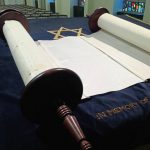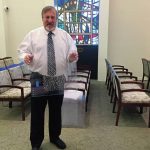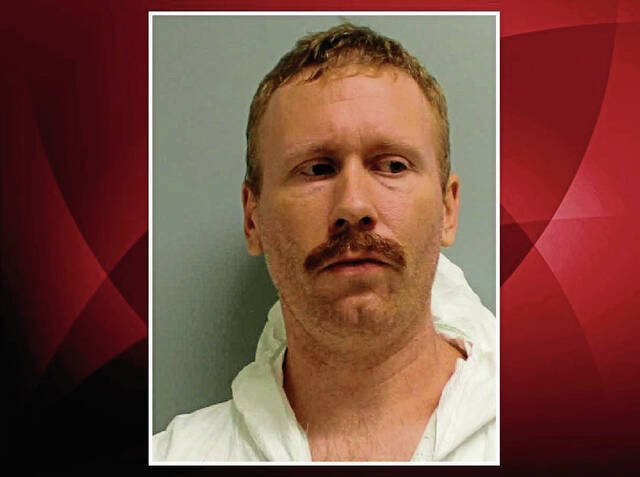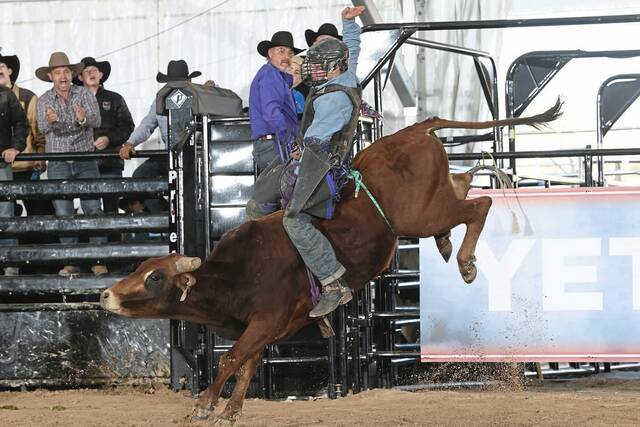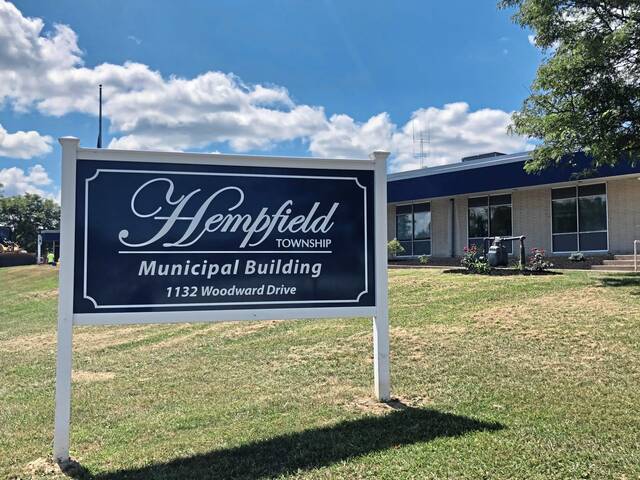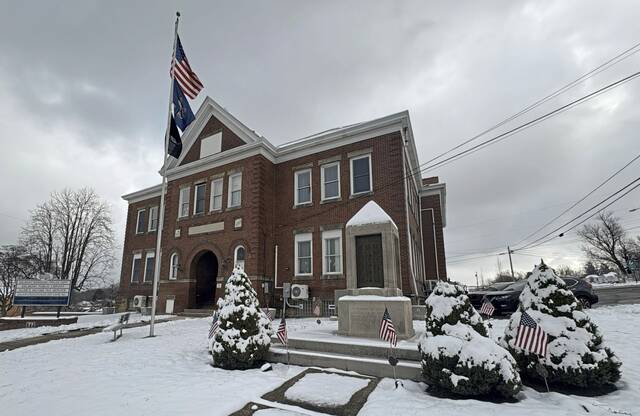Rabbi Lenny Sarko was told making a braille Sefer Torah while adhering to kosher laws was impossible.
Challenge accepted.
Four years later, Sarko produced the first braille Torah.
Sarko is the rabbi at the Congregation Emanu-El Israel synagogue on Main Street in Greensburg. The inspiration for the project came to Sarko long before he moved to Greensburg two years ago.
Sarko’s eyes began to bleed about four years ago as a result of Type 2 diabetes. Doctors were able to stop the bleeding, but the damage to his eyesight could not be undone.
Sarko learned how to read both English and Hebrew braille in case the condition of his eyes worsened. He discovered, however, that a braille version of the Sefer Torah — a scroll including the five books of Moses — did not exist, which is where his journey began.
The braille Sefer Torah allows blind and visually impaired members of the Jewish community to fully participate in the faith, Sarko said. Because the Torah must be read and not memorized, these individuals were unable to speak the words of the Torah themselves until now.
To follow kosher laws, Sarko said, the Torah must be made of organic materials, completely by hand and without mistakes. If a mistake is made, the producer must start that particular page over.
In his research, Sarko discovered some experts feared the braille dots would not show up on cowhide — the material typically used for Torah scrolls — or would become damaged once the scroll was rolled up. Others believed a braille version could not be produced without the assistance of machines.
Sarko used a slate and stylus, a tool used to imprint braille on paper.
Each braille cell contains six dots in two vertical lines of three. To create braille text, the user must put the paper between the top and bottom of the slate’s pre-drilled holes and punch in the appropriate letters with the stylus.
On a Torah scroll, there are 239 columns with 4,000 dots per column.
Moving forward, it will take Sarko five months to finish one scroll. A written Torah typically takes a year.
The cost of the braille Torah, on the other hand, is roughly the same as a written scroll, which Sarko said is approximately $25,000.
Sarko financed the project and completed it without outside help. He does, however, plan to bring a few more people on board to make additional scrolls.
Because of the cost, Sarko said he does not expect to sell many scrolls. Rather, he is considering a system in which anyone in the country can rent a scroll for a particular day.
Sarko hopes to expand this opportunity to people outside the United States.
“A blind or visually impaired person is considered a full member of the community, regardless of denomination, but if (the Torah) has to be read, can they participate in that portion? Up to now, no,” Sarko said. “This allows them not only to be, in name, a full member, but to actually do it.”
This might not be the case for all members of the Jewish faith. According to Virginia Lieberman, secretary for the Board of Directors at Congregation Emanu-El Israel, Orthodox traditions within Judaism do not permit people to touch the Torah, which would prevent them from reading the braille version. However, she said these individuals might feel comfortable reading a braille Torah in their homes as opposed to during a service.
“I would hope that there would be other congregations that want to take advantage of the opportunity to have one — even if they didn’t use it in services — because it gives an opportunity for those people who are vision-impaired to be able to use it,” said Lieberman, of Greensburg.
Sarko has received positive feedback from both Emanu-El Israel congregants and Jewish people nationwide.
“I’m getting calls from all over the country: ‘When can we get the scroll?’ Because it’s never been available before,” Sarko said. “It’s been very positive, very supportive, very exciting.”
Jim Davis, former board president and current congregant, said Sarko’s efforts are a “kind gesture to the rest of humanity.”
“Rabbi Lenny is really all about helping people,” said Davis, of Greensburg. “You don’t think about life without your vision — what it means, what it would mean to you. This journey will allow people to feel whole about a life experience.”
Similarly, Board President Irene Rothschild said Sarko’s project has been “wonderful” for the community.
Rothschild, of Latrobe, said she hopes the braille Torah will help grow the membership at the congregation, especially now that virtual services allow people from any location to attend. She added the braille Torah will increase and strengthen the Jewish community across the world.
“We’re just so thrilled that all these people are showing an interest in joining us and converting to Judaism,” Rothschild said. “We owe it all to (Rabbi Lenny), and that makes us feel very proud and very fortunate to have him as our rabbi.”






